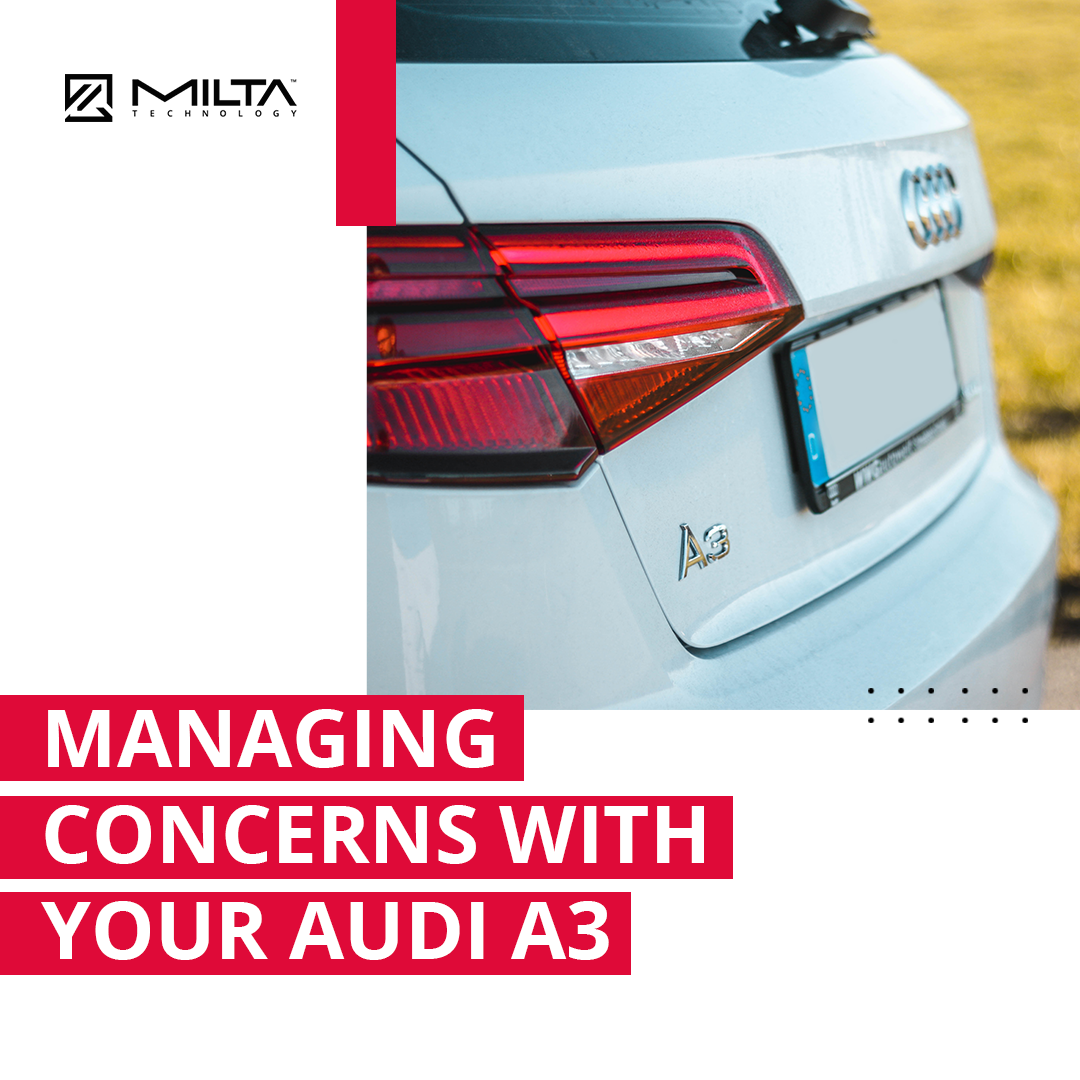Managing Concerns with Your Audi A3
Since its debut in 1996, the Audi A3 has established itself as a revered model within the brand’s diverse lineup, captivating both enthusiasts and practical drivers alike. This versatile gem is offered in both saloon and hatchback variants, with the latter enjoying remarkable popularity in the UK’s compact car scene. Conversely, the A3 saloon has garnered favor in North America as a more compact, accessible, yet still opulent alternative to the larger A4 saloon, effectively challenging the BMW 3 Series.
Although the Audi A3 has undoubtedly earned its stripes over four generations, with the latest one commencing in 2020, it hasn’t completely skirted the occasional hurdle. In this present discourse, we endeavor to impart insights into proactively addressing and managing commonplace potential concerns associated with the Audi A3.
/
Airbag Conundrums
Regrettably, Audi found itself ensnared in the extensive Takata airbag imbroglio, which sparked a sweeping recall encompassing myriad vehicles over several years. Alas, the Audi A3 was not immune to this global predicament, encompassing models from 2005 to 2013. If you’ve been an unbroken steward of your Audi A3 from any of these model years, it’s plausible that you’ve already been part of the recall and have rectified the matter.
However, if your pursuit involves acquiring a pre-owned Audi A3—quite a popular choice due to competitive pricing driven by elevated production numbers—it’s judicious to delve into the airbag servicing history. While all models between 2003 and 2013 warrant meticulous scrutiny, extending the inquiry to 2015 is prudent. Validate whether the vehicle was either exempt from the recall or underwent the necessary remediation.
Mostly implicated were the sensors orchestrating the timely deployment of airbags. In the event of their malfunction, the airbag could transmute into a perilous entity, potentially triggering untimely inflation that obstructs visibility or failing to deploy when imperative.
/
Coolant Seepage
Incidents of water pump issues within Audi A3s have surfaced, often manifesting around 30,000 to 70,000 miles on the odometer. Audi has made strides to rectify these water pump quandaries, notably with the 2015 model. The brand has been combating adverse publicity associated with these issues for some time now.
/
Why is this a cause for concern?
A malfunctioning water pump may facilitate the leakage of coolant from its housing, compromising the crucial process of coolant circulation. In a properly functioning system, coolant maintains optimal temperature levels, but a flawed water pump precipitates inadequate coolant flow, which, in turn, can precipitate engine overheating. In the realm of an Audi A3 engine, as in any other vehicular engine, overheating stands as a formidable adversary to engine well-being—undoubtedly a scenario best averted.
For prospective pre-owned Audi A3 buyers, a judicious course of action involves scrutinizing service records for any instances of water pump replacement, especially if the model boasts an odometer reading between 30,000 and 70,000 miles. Gaps in water pump-related information warrant skepticism.
For existing Audi A3 proprietors, vigilant monitoring of the engine temperature gauge is crucial. An abrupt spike in temperature might signify a malfunctioning pump warranting immediate inspection. Additionally, conduct routine checks within your garage or habitual parking locale for telltale signs of coolant leakage. Thoroughly inspect your engine bay as well.
/
Elevated Oil Consumption
Under ordinary circumstances, routine oil changes for an Audi A3 shouldn’t necessitate intervals shorter than 3,000 miles. Many models can stretch that interval to 5,000 miles, even among earlier iterations that eschew contemporary synthetic oils. However, should you find yourself changing the oil with undue frequency or noticing precipitous oil level reductions devoid of any leak indications, the specter of rapid oil consumption looms.
This issue has been documented across a subset of Audi A3 models, particularly those produced between 2012 and 2017. The brunt of the impact targets variants equipped with a 2.0L turbo engine beneath the hood, with a probable origin traced back to faulty piston rings. This flaw hampers proper chamber sealing, expediting oil combustion. Besides the A3, other afflicted Audi models encompass the A4, A6, Q3, Q5, and TT.
Mitigating this concern necessitates replacing the faulty piston rings, potentially extending to the connecting rod bearings. However, an anticipatory stance is beneficial, commencing with vigilant oil level monitoring through the dipstick. Also, be attuned to exhaust fumes; excessively dark or dense emissions could signify undue oil consumption. Heightened engine noise might also be indicative.
/
Quirky Headlamp Behavior
Have you witnessed intermittent flickering of your A3’s headlights? Foreseeing such a situation hinges, in part, on identifying whether your Audi A3 is outfitted with Xenon lights. These lights were initially acclaimed for their longevity and superior daylight-emulating illumination. While these accolades largely hold true, instances of complications have arisen.
Flickering lights might be a minor concern, yet complete headlamp failure—observed in some A3 instances—can render nocturnal driving a perilous undertaking, not to mention an arduous one. Loose wiring connections, malfunctioning ballasts, and even aging xenon bulbs constitute the usual culprits. Xenon bulbs are touted to endure up to 2,500 hours, eclipsing the high-water mark of 1,000 hours for Halogen lights.
For potential A3 buyers, scrutinize the vehicle’s mileage and inquire about the extent of nighttime driving performed by the prior owner. Elevated nocturnal usage might prompt preemptive inspection prior to purchase or post-purchase.
/
Ultimately, Vigilance Wins
The Audi A3, undoubtedly, endures as a stalwart vehicle cherished by many. However, it’s important to recognize that even an investment in a reputable brand such as Audi doesn’t entirely preclude the prospect of latent issues, particularly in the context of pre-owned vehicles. The treatment an Audi A3 received from its previous steward remains an enigma. Thus, a commitment to routine servicing coupled with immediate reporting of warning indicators, unusual sounds, or other anomalies to your automotive professional stands as the best course of action.
Swift detection of issues invariably renders remedies more manageable, not to mention economical. By preserving a meticulous service record, your Audi A3 reciprocates with consistent performance and reliability.

